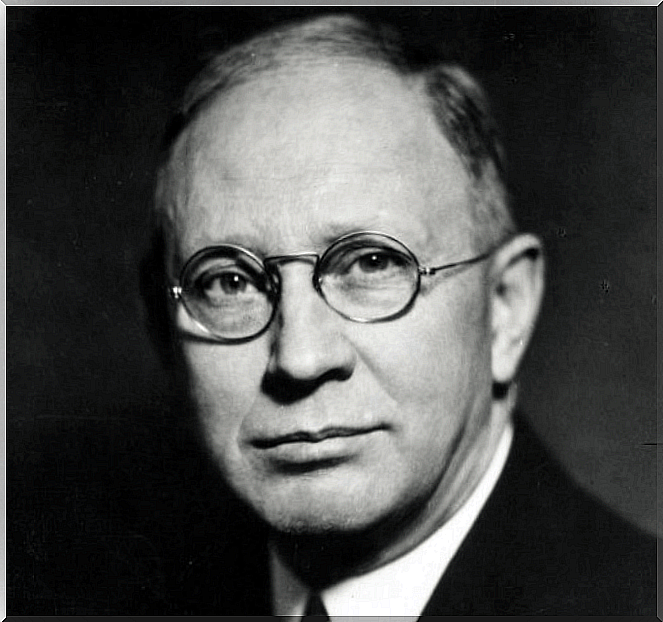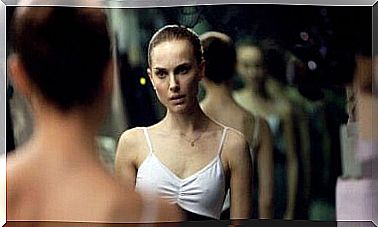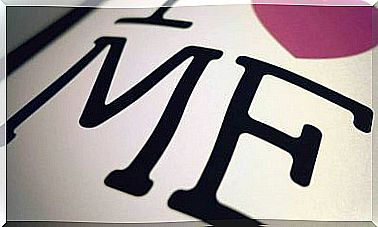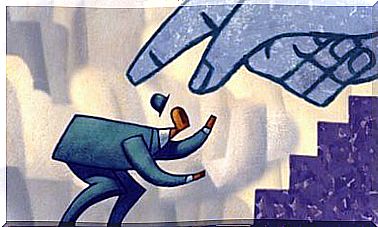Clark L. Hull And Deductive Behaviorism

Clark Hull proposes a new way of understanding behaviorism. Hull wanted to establish the basic principles of a science of behavior to explain the behavior of animals of different species and individual and social behavior. This is what is known as deductive behaviorism.
The theory offered by Clark L. Hull (1884–1952) was the most detailed and complex of the great theories of learning conceptualized throughout the 20th century. The basic concept for Hull was the force of habit, which he said settled with practice.
Habits were described as reward-based stimulus-response connections. According to Hull, responses, and not perceptions or expectations participate in the formation of habits, the process is gradual and reward is an essential condition.
Clark Hull’s deductive behaviorism
Hull is considered a neo-behavioral thinker. Thus, Clark Hull proposed a new way of understanding behaviorism from the logical positivism that dominated in his time.
Like the other leading behavioral authors, Hull believed that human behavior could be explained by conditioning and reinforcement. The drive reduction acts as a reinforcement for that behavior.
This reinforcement increases the likelihood that the same behavior will occur again when, in the future, the same need arises. Therefore, to survive in its environment, an organism must behave in a way that satisfies these survival needs. Thus, in a stimulus-response relationship, when stimulus and response are followed by a reduction in need, the likelihood that the same stimulus will “produce” the same response in the future increases.

Hull wanted to establish the basic principles of a science of behavior to explain both the behavior of animals of different species as well as individual and social behavior. His theory of deductive behaviorism proposes habit as a central concept. The strength of the habit will depend on whether the stimulus-response sequence is followed by a reinforcement and on its magnitude, which will depend on the reduction of the impulse associated with a biological need.
Hull’s learning theories were first presented in Mathematico-Deductive Theory of Rote Learning (1940), a collaboration with several co-workers, in which he expressed his findings through postulates expressed in both mathematical and verbal forms. .
Hull developed these ideas in Principles of Behavior (1943), where he suggested that the stimulus-response connection depends on both the type and the amount of reinforcement.
Hull’s theory of learning
Hull was one of the first theorists to try to create a grand theory designed to explain all behavior. This learning theory developed by Hull in 1943 is known as the drive reduction theory. Hull based his theory on the concept of homeostasis, the idea that the body actively works to maintain a certain state of equilibrium or equilibrium.
Apart from this idea, Hull suggested that all motivation arises as a result of these biological needs. Thus, in his theory, Hull used the term ‘drive’ to refer to the state of tension or excitement caused by biological or physiological needs.
An impulse, such as thirst, hunger or cold, creates an unpleasant state, a tension. To reduce this state of tension, humans and animals look for ways to satisfy these biological needs (drink, eat, seek shelter). In this sense,
Hull’s theory is based on the idea that secondary units (as opposed to primary / innate units, which are biological needs such as the desire for socialization, thirst, and hunger) are learned through conditioning and indirectly satisfy the needs. primary units, such as the desire for money, as it helps pay for shelter or sustenance.
These multiple secondary units occur when one is faced with more than one need. The purpose is to correct the disruption of balance (homeostasis), which is uncomfortable, meaning that behavior is learned and conditioned if, and only if, they satisfy a primary drive.

Hull also developed a way to express this learning theory mathematically, which is as follows:
sEr = V x D x K x J x sHr – sIr – Ir – sOr – sLr
In this formula:
- sEr: excitation potential, probability that an organism produces a response (r) to a stimulus (s)
- sr: force of habit, established by the number of previous conditions.
- D: Driving force, determined by the amount of biological deprivation.
- K: incentive motivation, or the size or magnitude of the goal.
- J: the delay before the body can seek reinforcement.
- lr: reactive inhibition, or fatigue.
- slr: conditioned inhibition, caused by the previous lack of reinforcement.
- sLr: reaction threshold, the least amount of reinforcement that learning will produce.
- sOR: random error.
According to Hull, the main contribution of the impulse reduction theory corresponds to a large extent in the elimination and reduction of impulses, which at some point hinder the activity of people as such, which also implies an increase in human potential and that he can function in his work environment, since, by satisfying all the needs, he will be able to improve performance and thus have greater success in life.
Final comments
Critics considered deductive behaviorism too complex or that it did not explain human motivation due to a lack of generalizability.
One of the biggest problems with Hull’s momentum reduction theory is that it does not account for how secondary reinforcements reduce momentum. Unlike primary drives, such as hunger and thirst, secondary reinforcers do nothing to directly reduce physiological and biological needs. Another major criticism of this theory is that it does not explain why people engage in behaviors that do not reduce impulses.
In any case, this approach influenced later theories and explanations within psychology. Many of the motivational theories that emerged during the 1950s and 1960s were based on Hull’s original theory or focused on providing alternatives to the drive reduction theory. A great example is Abraham Maslow’s famous hierarchy of needs, which emerged as an alternative to Hull’s approach.









